Newark is a medium sized city in terms of population, located at the nexus of series of regional and global infrastructures. City altitude ranges from 0 sea level in east to approximately 80 m above sea level in western section of the city. More than half of Newark has been changed by the sea and it lies below 10 ft. The increase in water level is expected to rise 6 ft by 2100. After comparison between impacts, we discovered that the most urgent impacts that is effected by the rise of sea level is the contamination impacts, including contaminated sites, brownfields, sewers, and industries. We mapped all the contiminated sites and concluded that most of the industries located on the periphery of the passaic river are going to be seriosly affected by the climate change. Instead of blocking forces, we are celebrating them and turning them into energy. Our proposal includes the periphery of the Passaic river being turned from industrial zone with high emissions into a new sustainable energy area that produces renewable energy to the whole city by the means of solar power wind energy and turning waste water to energy. The energy distributed around the city. The industries are replaced and reinvented into new energy units that serves the commercial tissues of the site.
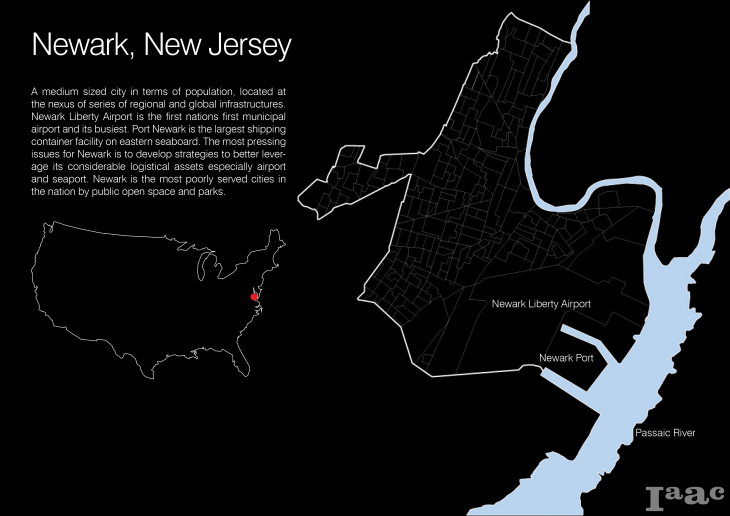
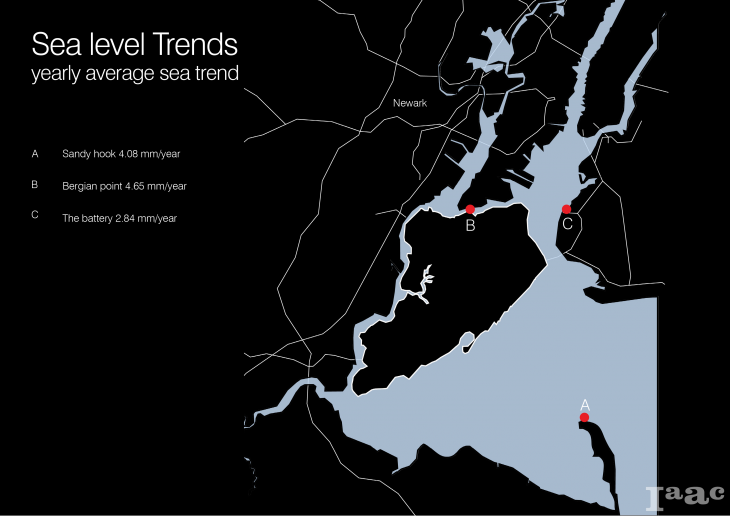
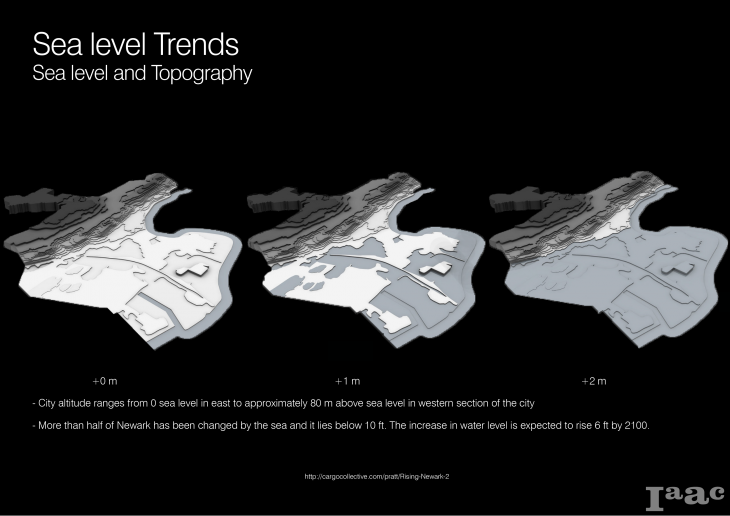
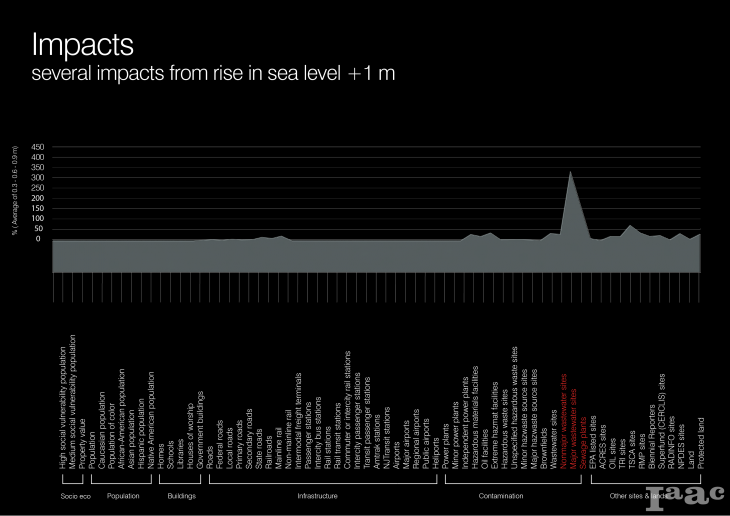
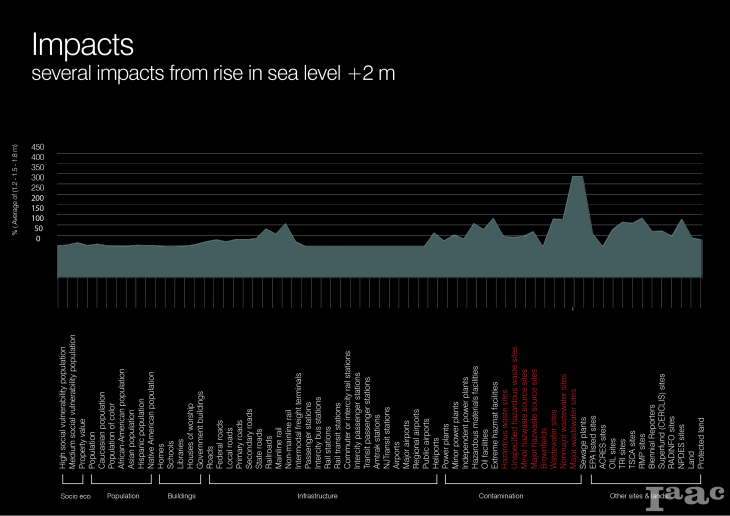
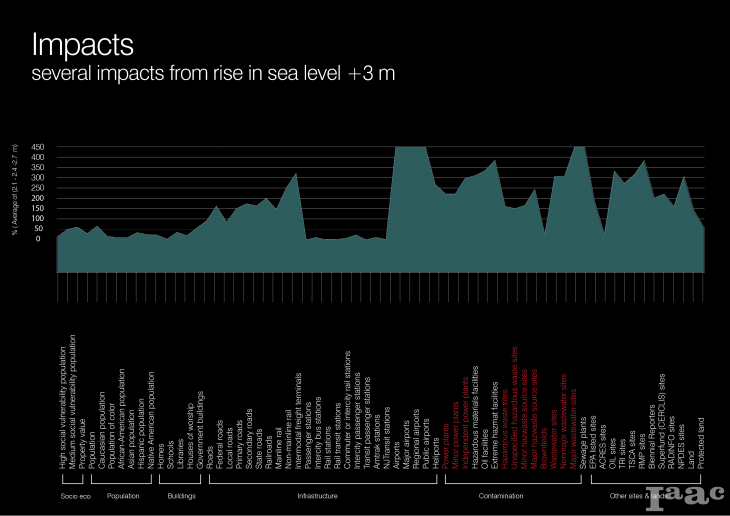

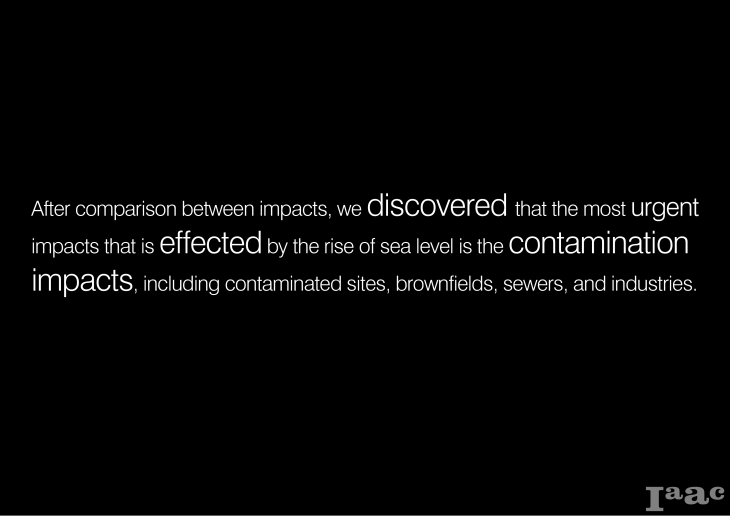
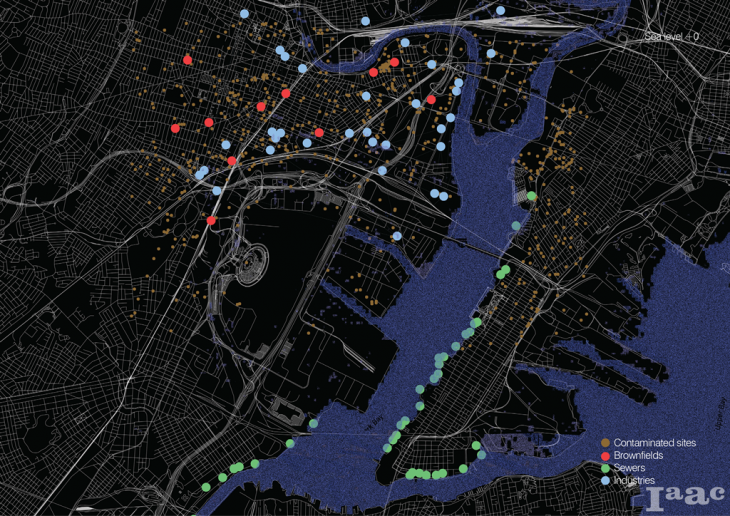
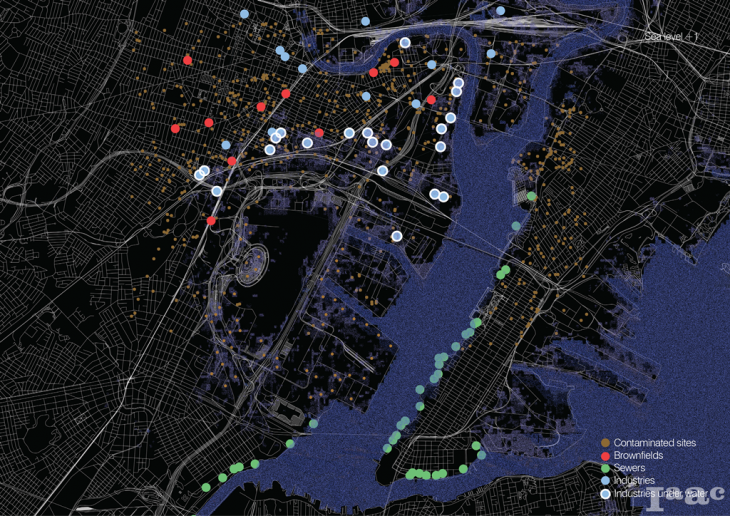
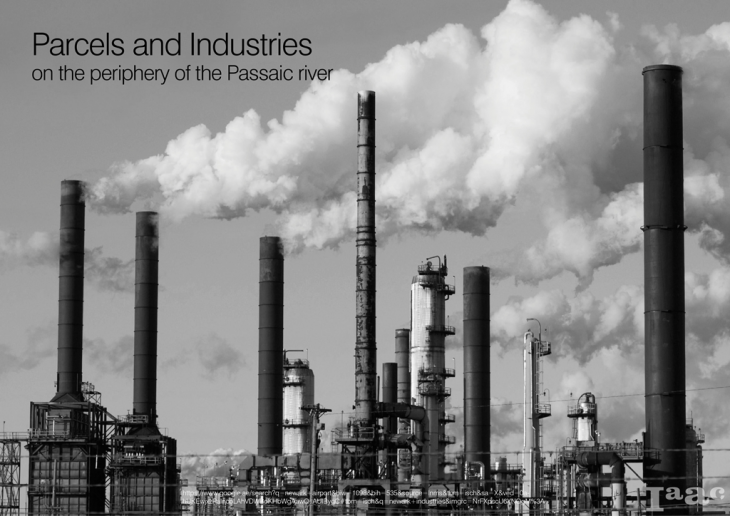
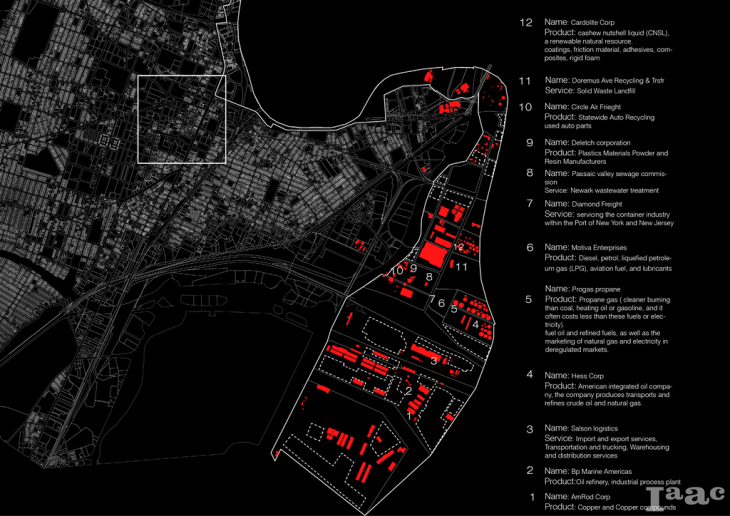
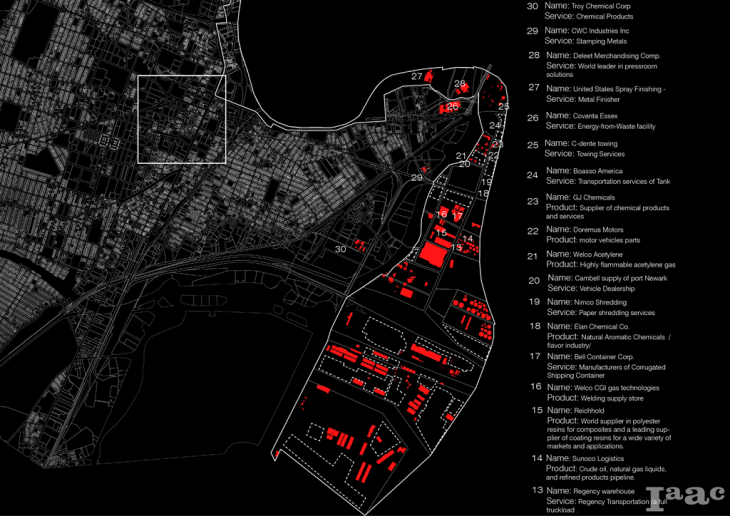
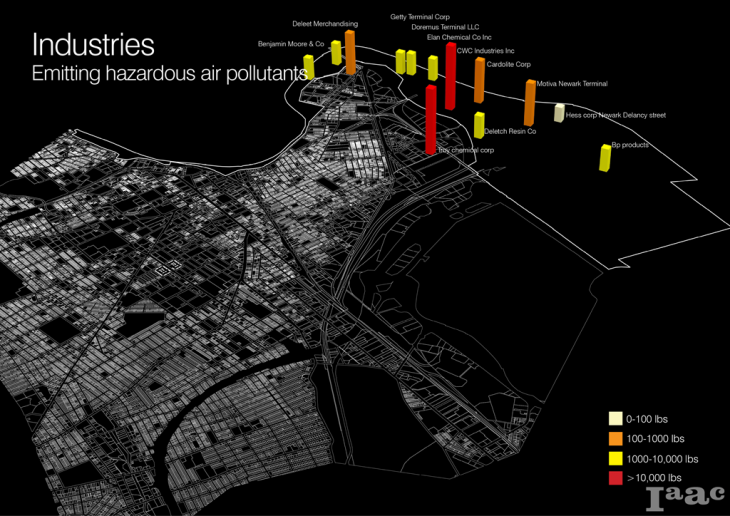
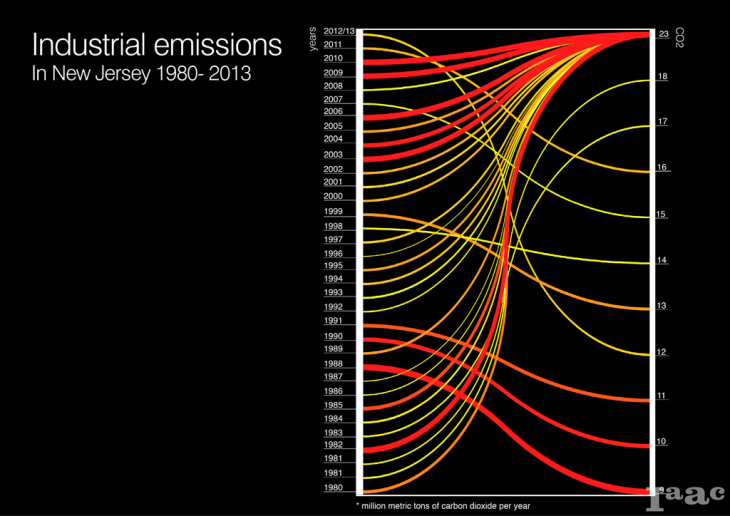
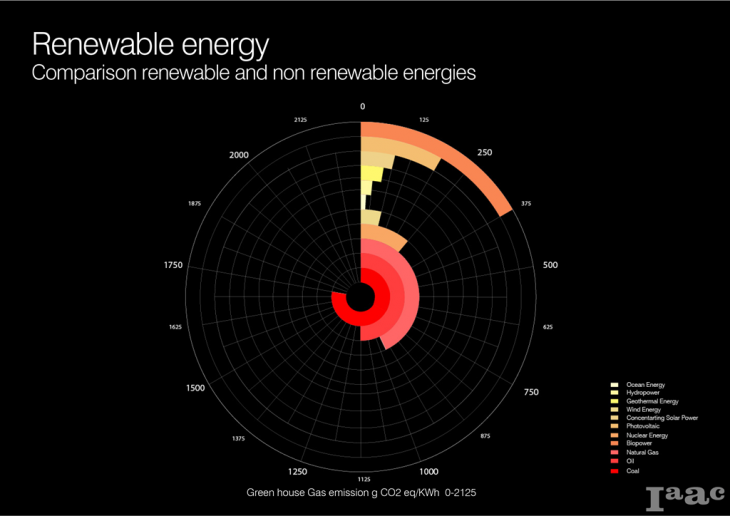
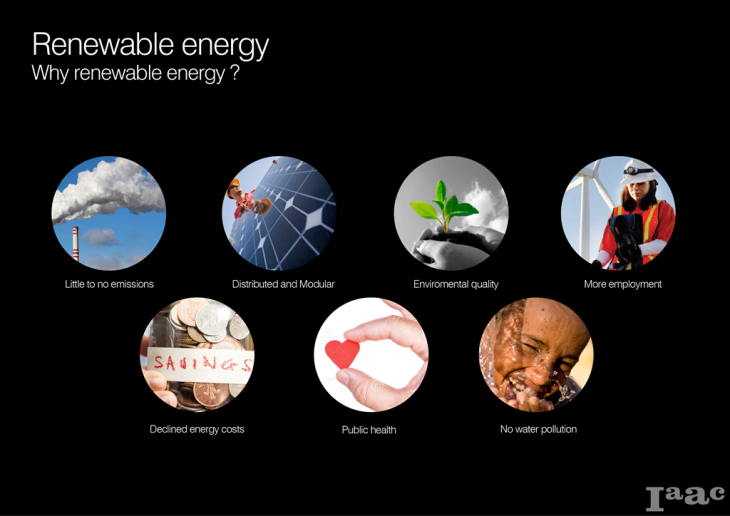
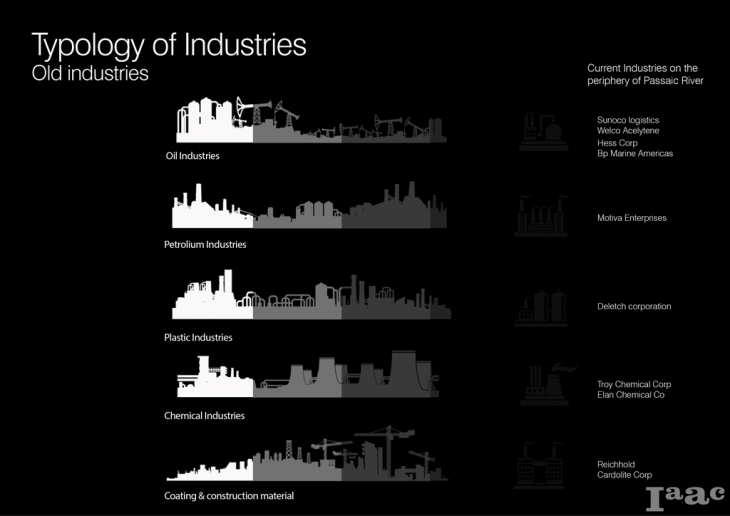

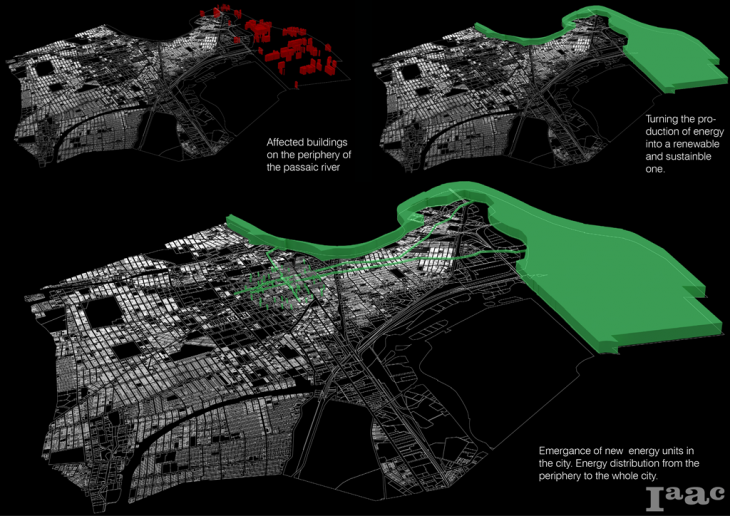
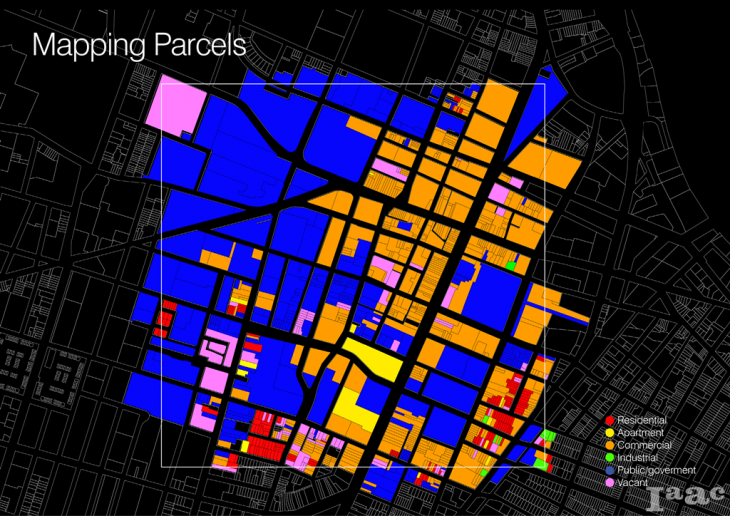
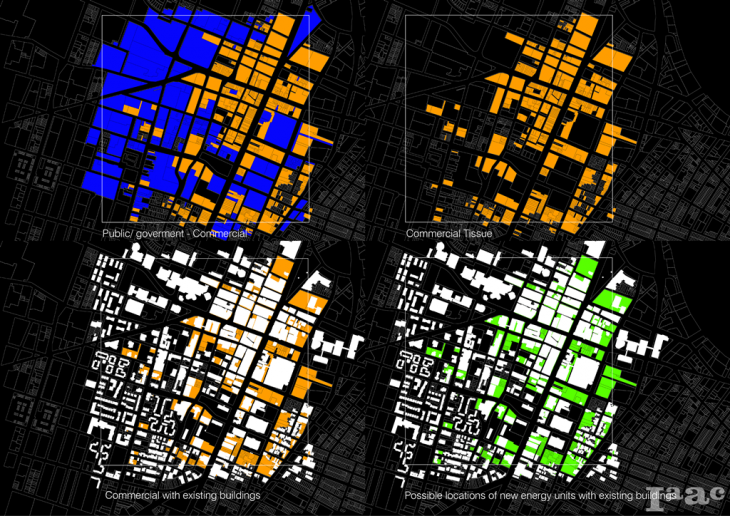
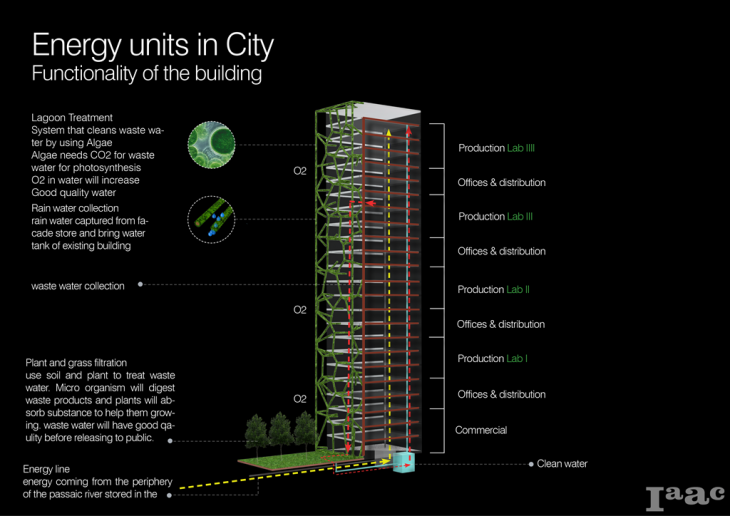
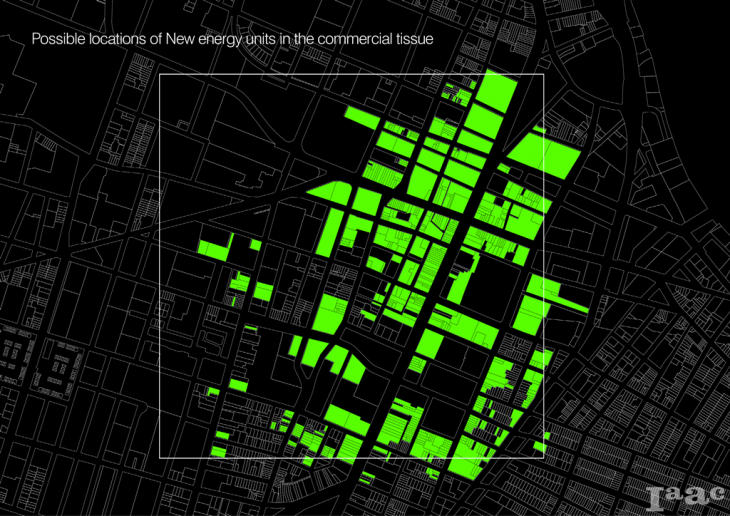

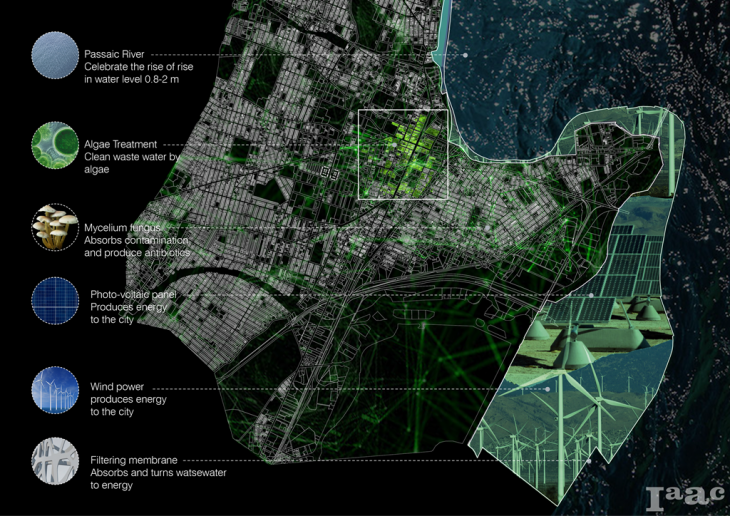
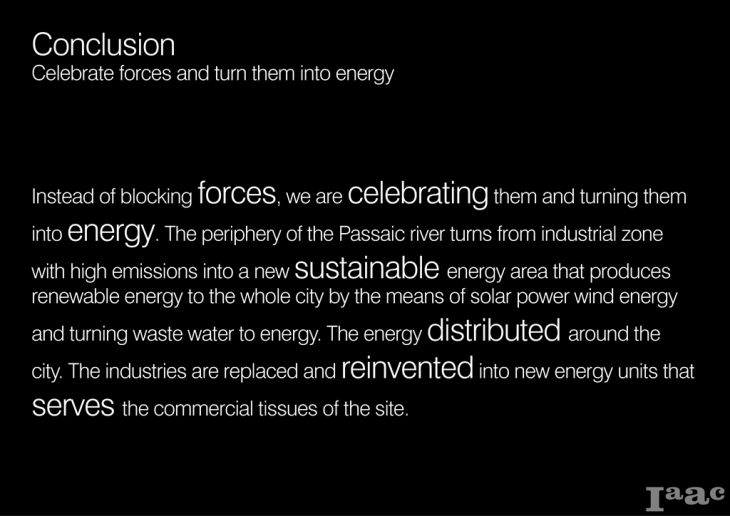
Project done in the Institute for Advanced Architecture of Catalonia 2016
Students: Borislava Lyubenova, Fernando Castilho, Maryann Owais, Nour Mezher
Faculty: Willy Muller, Jordivivaldi Piera, Starsk Lara
